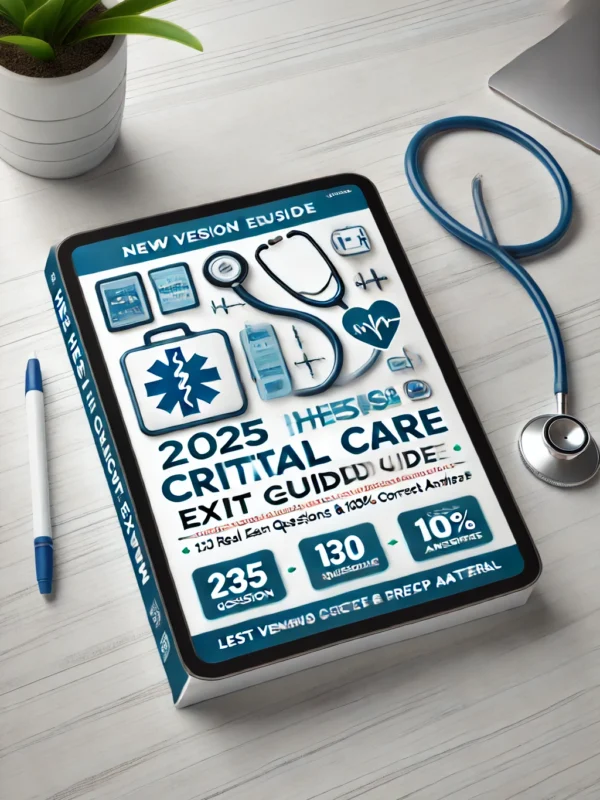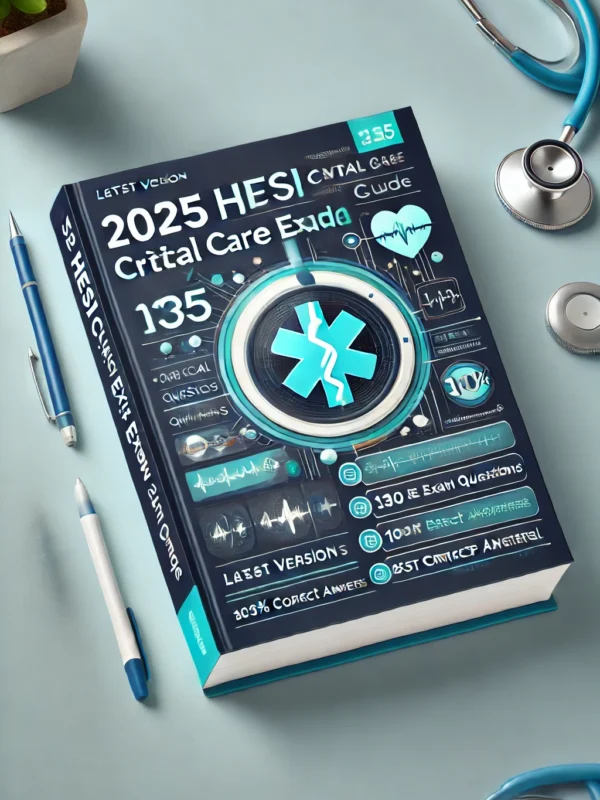Master the ATI Comprehensive Predictor Exam 2024 with this ultimate study guide, designed for nursing students preparing for their licensure exams. This all-encompassing resource features high-yield questions that target key nursing concepts, including medical-surgical, pediatric, maternity, and psychiatric nursing, as well as pharmacology and patient safety. Each question is paired with expert answers and in-depth rationales to clarify complex topics and enhance critical thinking skills. The guide also provides proven test-taking strategies to boost confidence and optimize performance under exam conditions. Aligned with the 2024 ATI Comprehensive Predictor content outline, it incorporates the latest evidence-based practices and NCLEX-style questions to ensure readiness for both the predictor exam and the NCLEX-RN. This study guide is an indispensable tool for achieving exam success and transitioning into professional nursing practice.
Preview
1. A nurse in a hospital cafeteria overhears two assistive personnel (AP) discussing a
client. They are using the client’s name and discussing details of his diagnosis. Which
of the following actions should the nurse take first?
a) Report the AP’s behavior to the supervisor.
b) Complete an incident report regarding the APs’ conversation.
c) Provide the AP with written documentation regarding client confidentiality.
d) Tell the APs to discontinue their conversation. ✅
Rationale: The first priority is to stop the breach of confidentiality immediately. HIPAA
regulations require healthcare providers to protect patient information. While reporting and
educating the APs is important, the immediate action is to stop the inappropriate
discussion.
2. A community health nurse is teaching a group of adults about the importance of
health screenings. The nurse should include that African American males are almost
twice as likely as Caucasian males to experience which of the following?
a) Testicular cancer
b) Obesity
c) Stroke ✅
d) Melanoma
Rationale: African American males are at higher risk for hypertension and stroke due to
genetic and socioeconomic factors. Education on prevention and early screening is
essential.
3. A nurse is caring for a client who sprained his left ankle 12 hours ago. Which of the
following prescriptions given by the provider should the nurse clarify?
a) Elevate the affected extremity on two pillows.
b) Apply heat to the affected extremity for 45 minutes on and 45 minutes off. ✅
c) Wrap the affected extremity with a compression dressing.
d) Assess the affected extremity for sensation, movement, and pulse every four hours.
Rationale: Heat should not be applied within the first 24 to 48 hours of an acute injury
because it can increase swelling and inflammation. The correct intervention is to apply ice.
client. They are using the client’s name and discussing details of his diagnosis. Which
of the following actions should the nurse take first?
a) Report the AP’s behavior to the supervisor.
b) Complete an incident report regarding the APs’ conversation.
c) Provide the AP with written documentation regarding client confidentiality.
d) Tell the APs to discontinue their conversation. ✅
Rationale: The first priority is to stop the breach of confidentiality immediately. HIPAA
regulations require healthcare providers to protect patient information. While reporting and
educating the APs is important, the immediate action is to stop the inappropriate
discussion.
2. A community health nurse is teaching a group of adults about the importance of
health screenings. The nurse should include that African American males are almost
twice as likely as Caucasian males to experience which of the following?
a) Testicular cancer
b) Obesity
c) Stroke ✅
d) Melanoma
Rationale: African American males are at higher risk for hypertension and stroke due to
genetic and socioeconomic factors. Education on prevention and early screening is
essential.
3. A nurse is caring for a client who sprained his left ankle 12 hours ago. Which of the
following prescriptions given by the provider should the nurse clarify?
a) Elevate the affected extremity on two pillows.
b) Apply heat to the affected extremity for 45 minutes on and 45 minutes off. ✅
c) Wrap the affected extremity with a compression dressing.
d) Assess the affected extremity for sensation, movement, and pulse every four hours.
Rationale: Heat should not be applied within the first 24 to 48 hours of an acute injury
because it can increase swelling and inflammation. The correct intervention is to apply ice.












Reviews
There are no reviews yet.